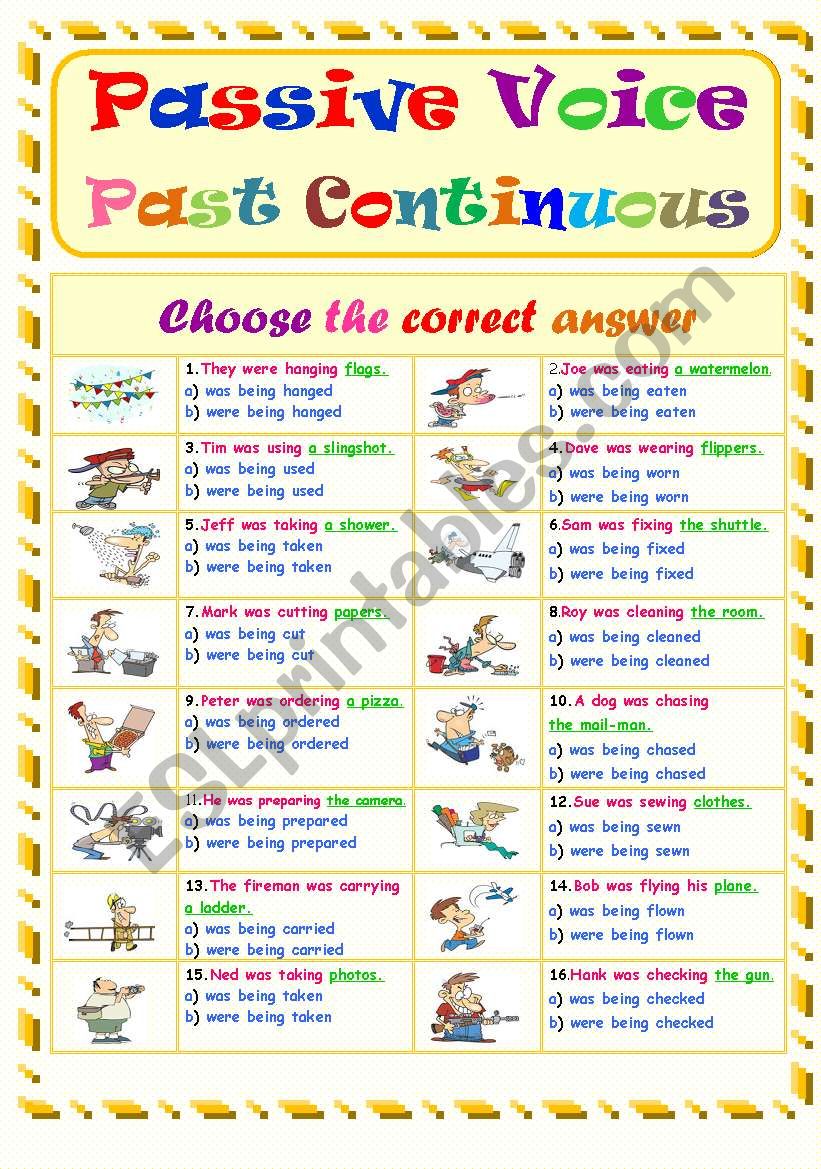

The object becomes subject, the old subject usually disappears (but it can hang around in a by-phrase if you want). This auxiliary takes whatever form the main verb of the original transitive clause had: present perfect in the first, and simple past in the last two.Īnd the nouns move around, too. In each passive example, the main verb is a type 4 form, immediately preceded by a form of auxiliary be. (Someone) gave the guests beer -> The guests were given beer.(Someone) gave beer to the guests -> Beer was given to the guests.(Someone) has washed the floor -> The floor has been washed.That's the point of the passive construction - it focusses on the direct object by promoting it to subject in a new sentence: You don't need a specific subject - indeed, if you are using passive, you probly don't care or even know about the subject. So not every sentence can have a passive form it has to be the right kind of verb and there has to be a direct object. Passive is something that happens only to transitive clauses, which means the verb has a direct object. Passive is a Construction, which means it's not just one thing, but a whole bunch of things done together, like driving a car involves more than just turning the wheel. Passive, on the other hand, is not a verb form, and doesn't have anything to do with time, present or past. And that's all there is for the past tense. Every main clause in every English sentence has to have a tense form (either present or past) as the first auxiliary verb (if there is one), or otherwise as the main verb. a past participle form: gone, seen, learned, said, folded.a present participle form (used for gerund): going, seeing, learning, saying, folding.a past tense form: went, saw, learned, said, folded.Make what is acted upon the subject of the sentence, and change the verb to a form of be + past participle.

Dialogue (including direct internal dialogue) is written in present tense: I need some chocolate to get me through this day. In these days of social distancing, she didn’t want to take any chances.

a present tense form (used for infinitive): go, see, learn, say, fold If you want to change an active-voice sentence to passive voice, consider carefully who or what is performing the action expressed in the verb, and then make that agent the object of a by the. The default tense choices for storytelling are: The narrative of most stories is written in past tense: She ignored the knock on the door.Aside from their names sounding alike, there's no similarity at all between past and passive.Īlmost every verb in English has several forms, two tensed and two untensed:


 0 kommentar(er)
0 kommentar(er)
